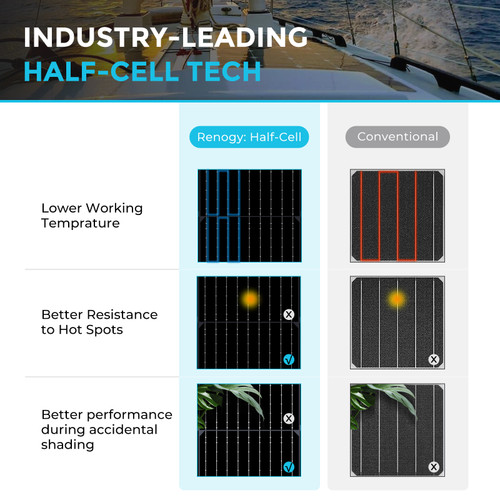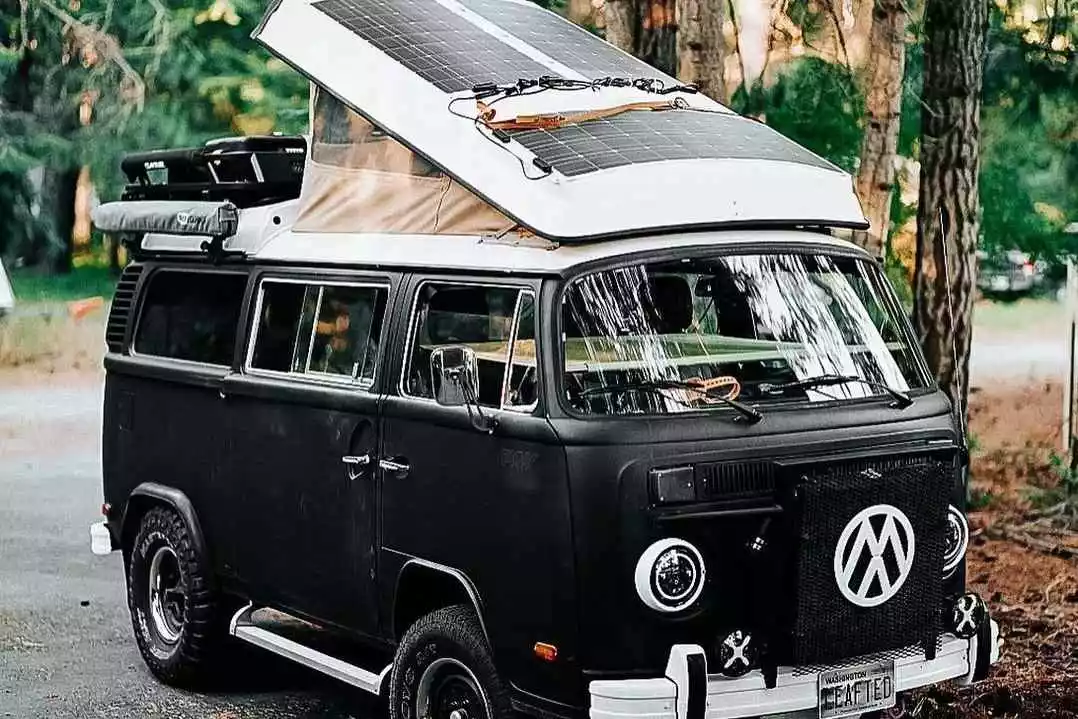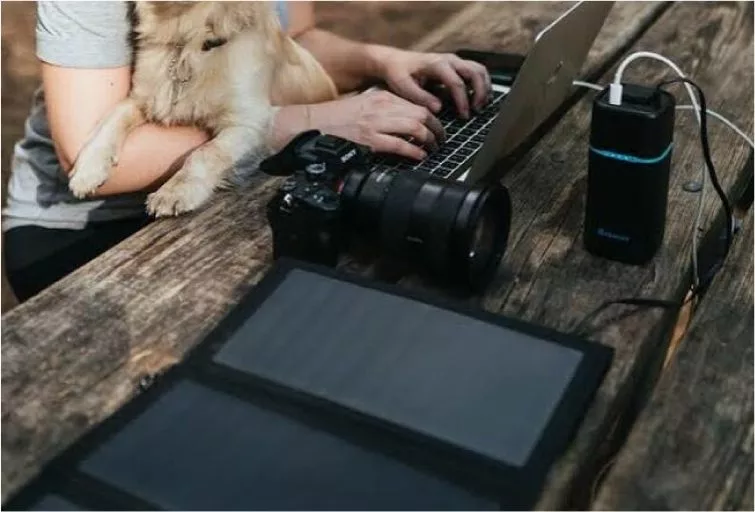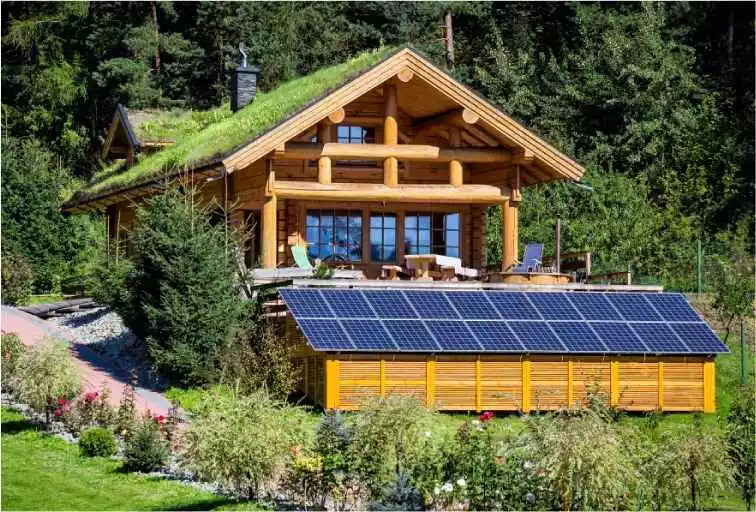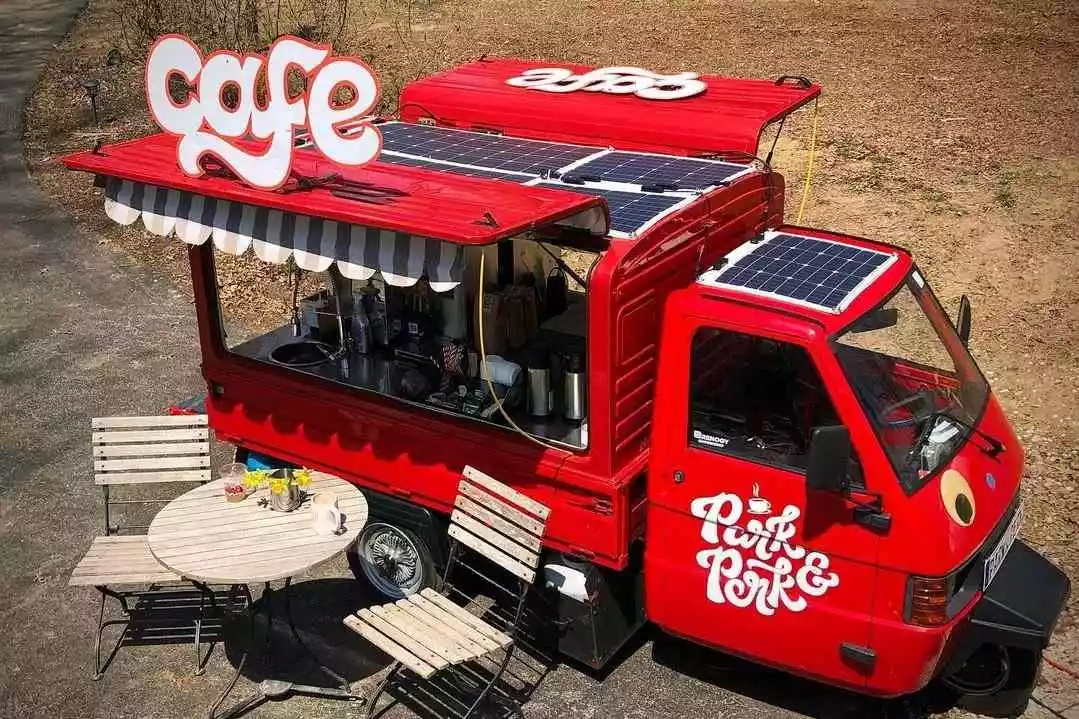The Renogy Black Division 100W Lightweight Monocrystalline Solar Panel enhances module efficiency while minimizing its weight. It is the perfect option for any off-grid solar system, especially for transportation applications such as RVs and boats. This solar panel frame features a lightweight substrate and laminate, perfect for outdoor applications.
This solar panel combines high efficiency (PERC) monocrystalline solar cells with half-cut cell technology to improve electrical performance and power generation efficiency. This panel comes with pre-drilled mounting holes, solar connectors, and a junction box that allows easy and fast installation.

It works with most curved surfaces as it can be bent within 240 degrees.
Presenting an all-black glare-free appearance.
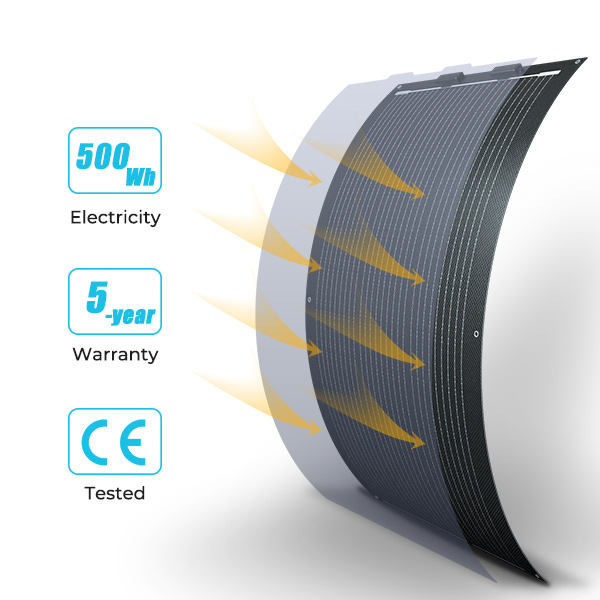
This Renogy Solar Panel can provide an average of 500 Watt-hours of electricity per day (depending on sun availability).
It offers 5-year material and workmanship warranty and has passed the CE test.
This solar panel frame features a lightweight substrate and laminate, perfect for outdoor applications.

Withstand up to 5400 Pa of heavy snow load and up to 2400 Pa of high wind load.
Provide excellent durability in a harsh environment.
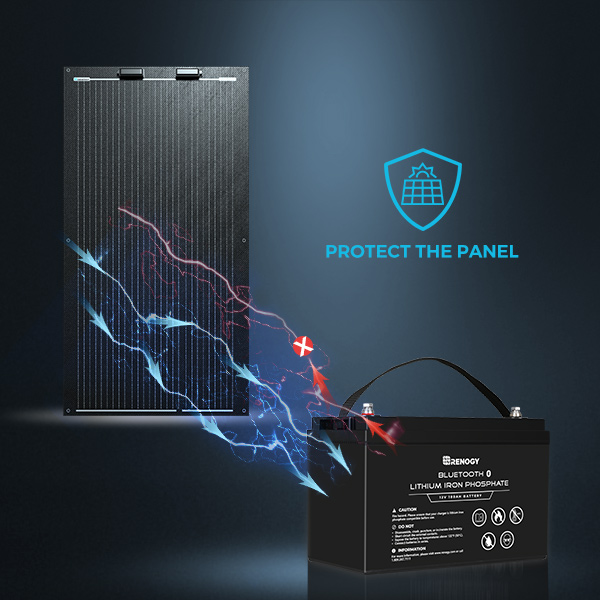
When there is no sun exposure, the diode prevents reverse current flow from the battery to the solar panels, to avoid current damage to your solar panels.
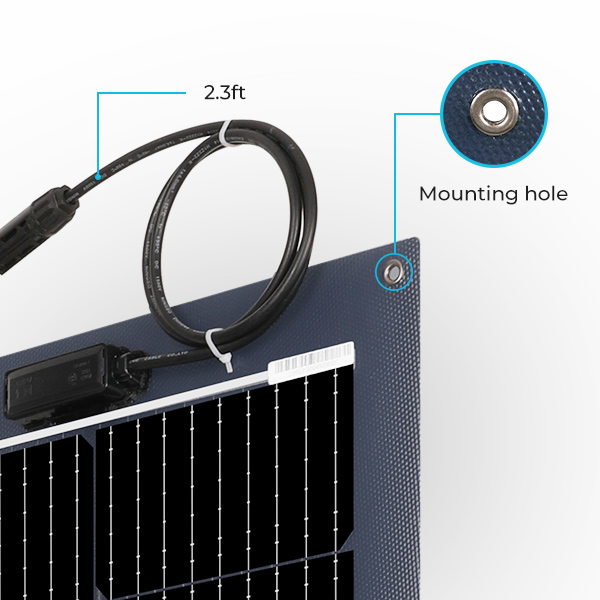
This Renogy solar panel comes with pre-drilled holes for quick installation. Besides, it can also be bonded to the surface by using silicone adhesive or velcro.
The solar connector cables are 2.3 feet long without worrying about length limitations.
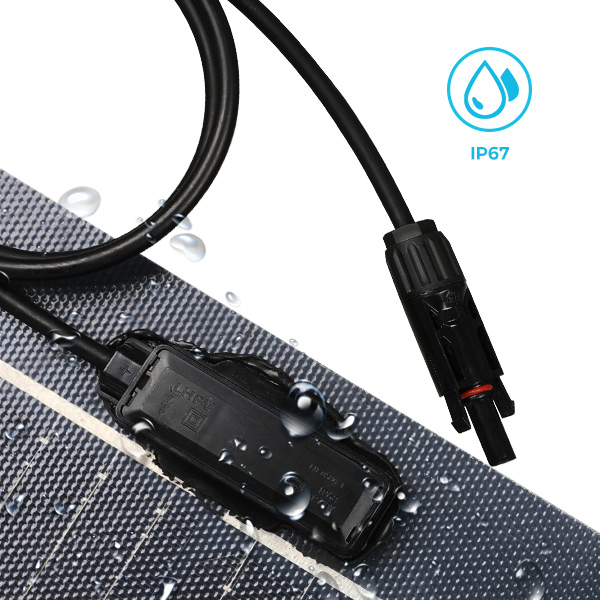
The IP67 rated waterproof junction box and solar connectors ensure that water and dust will not enter during extended outdoor use.
Cables attached on the back with Solar Connectors are ready for connection and extension.
- If you have any questions regarding this product, please call us at 1 (909) 287-7111 or or submit a ticket for troubleshooting assistance.
- More questions about your off-grid power system? Learn more from Renogy Learning Center!
Package Includes
|
Black Division 100W Lightweight Monocrystalline Solar Panel
1 x
|
| Built-in Components | |
|---|---|
| Black Division 100W Lightweight Monocrystalline Solar Panel | Output Cables: 12 AWG (2.3ft per cable) |
| Cell Type: PERC Monocrystalline (6.5 x 3.3 in) | Number of Cells: 36 (12 x 3) |
| Junction Box: IP 67 | Fire Rating: Class A |
| Specifications | |
|---|---|
| Maximum Power at STC: 100W | Module Efficiency: 15.7% |
| Optimum Operating Voltage (Vmp): 19.4V | Open-Circuit Voltage (Voc): 23.5V |
| Optimum Operating Current (Imp): 5.20A | Short-Circuit Current (Isc): 5.51A |
| Operating Temperature: -40℃ to 80℃ (-40℉ to 176℉) | Maximum Series Fuse Rating: 15A |
| Maximum System Voltage: 600V DC | Rated Current (MC4 Solar Connectors): 35 A |
| Weight: 2.4 kg / 5.3 Lb | Dimensions: 1093.0 x 582.0 x 20.5 mm (43 x 22.9 x 0.8 in) |
| Maximum AWG Size Range (MC4): 10 AWG | Certifications: CE, ISO |
| Material and workmanship warranty: 5 years | Performance:5 year 95% output warranty 10 year 90% output warranty 25 year 80% output warranty |
1. What do I need to complete my off-grid solar power system?
2. What do off-grid and on-grid mean?
3.Why is my solar panel underproducing?
4. How should I connect solar panels to an electrical circuit (series vs parallel)
5. How many solar panels do I need?
6. Can I walk on flexible solar panels?
7. Can this solar panel be adapted to a 12V Marine Battery or 48V Lithium Battery?
8. How to clean solar panels?
You can clean the panels with a non-abrasive sponge and water.
We suggest regular maintanence to swipe the dust, sand and other dirts away. Built up dirt and stain will reduce the power output of the panel.






